Mechanics, the guys who get all the messing around and none of the credit.
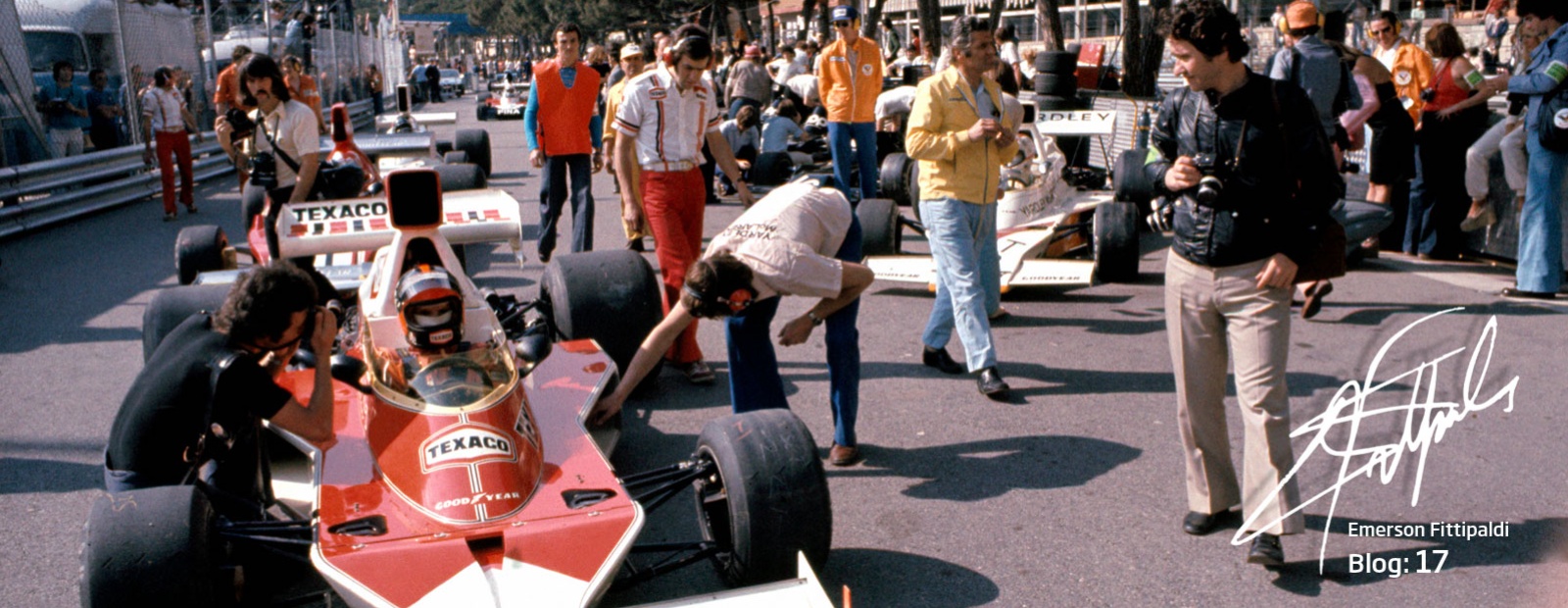
Neil Trundle, a man who has been there, done it, got the t-shirts, the videos and the trophies. He established the Project 4 team with Ron Dennis, the outfit that built the ProCars for BMW, wowed the paddocks with its presentation and persuaded the mighty Marlboro to support its bid for the old McLaren team. The rest, as they say, is history.
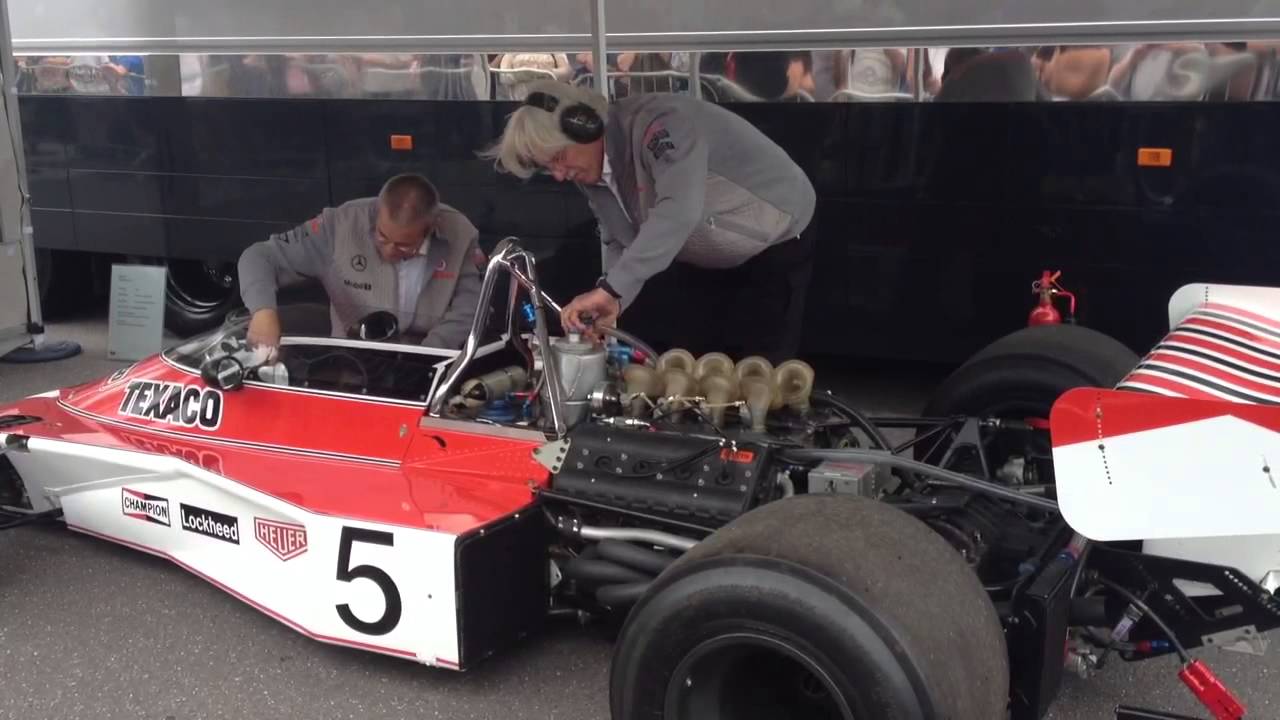
While Trundle hasn't been lucky enough to work with many great drivers, he has worked with one of the greatest of them all: Ayrton Senna. And with the Brazilian's teammate, four-time world champion Alain Prost, a rival of many battles with Magic between 1988 and 1989 in the fight for the drivers' title.
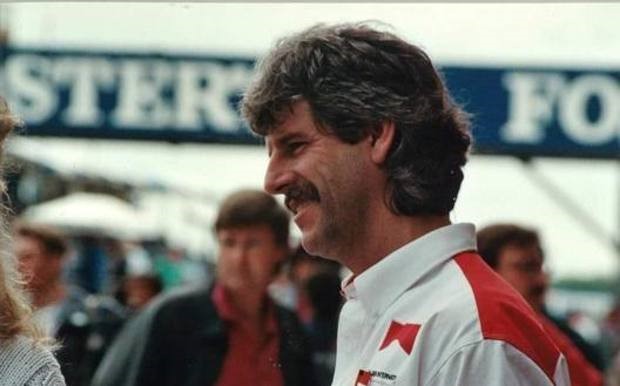
In the final years of his career, after leaving the team on track, the former chief mechanic brought his talent back to the factory, initially setting up and managing the gearbox department and then the fleet of historic vehicles. A name forever etched in McLaren history.
McLaren veteran Neil Trundle gets fitting tribute.
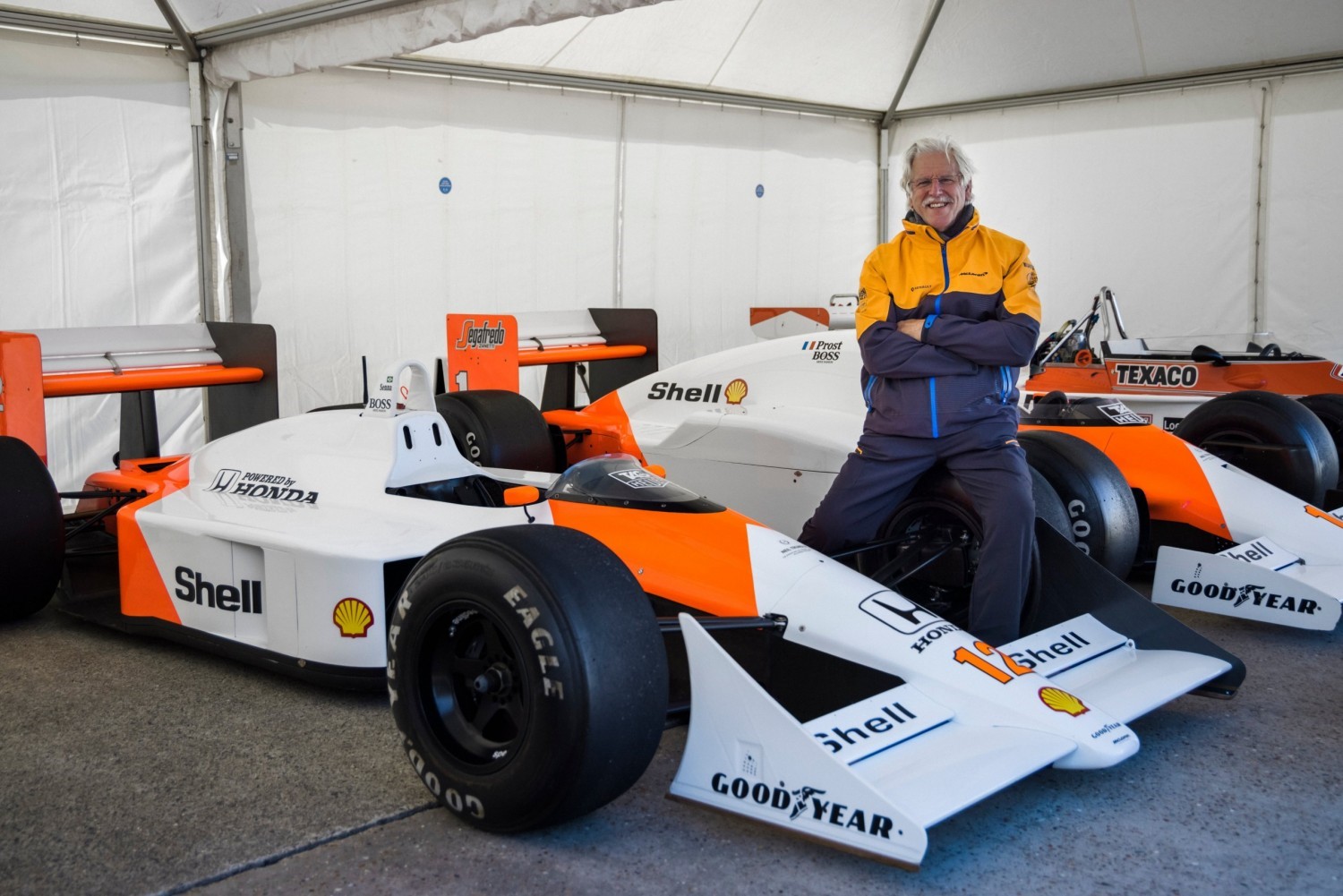
McLaren is honoring this weekend at Imola one of its most loyal employees, the venerable Neil Trundle, former chief mechanic to - among others - Ayrton Senna and Alain Prost.
Trundle's epic 33-year stint with McLaren began when his former Brabham colleague and Rondel Racing partner Ron Dennis ushered in a new era for the Woking-based outfit.
From McLaren's first MP4 carbon fibre chassis to the team's 'Golden Child', the dominant McLaren MP4/4, Trundle's unwavering dedication accompanied the team's triumphs.
Eventually, Trundle transitioned to the less frantic atmosphere of McLaren Heritage, wrenching on Woking's outstanding collection of revered machines and overseeing in recent years the development of the capable team that will now look after McLaren's historic cars.
This weekend, Carlos Sainz and Lando Norris' MCL35 machines will carry a special message for Neil ahead of his well-deserved retirement.
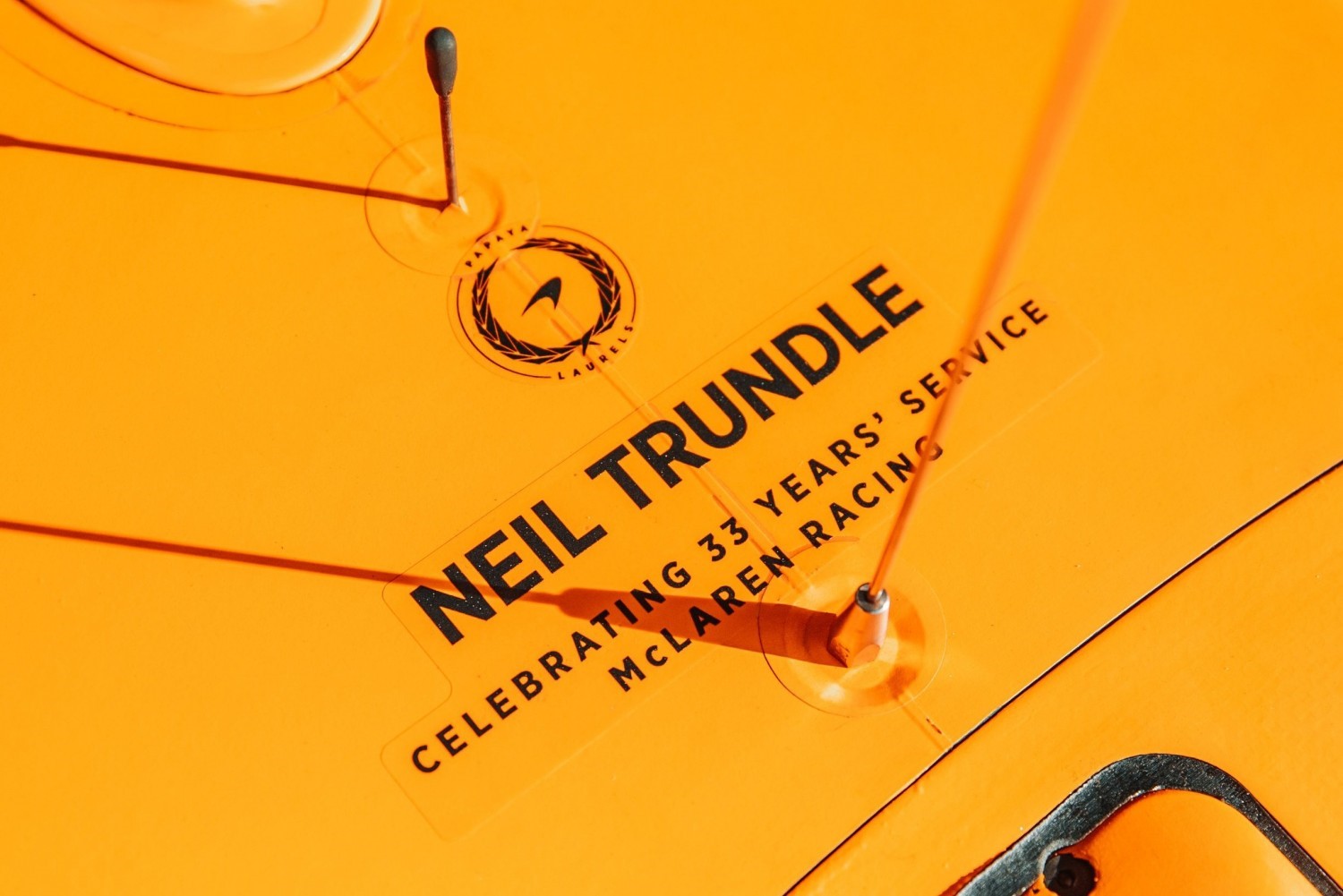
McLaren: “this weekend we're recognising a legend of McLaren Racing, Neil Trundle, who has recently decided to retire. Neil has applied his dedication and hard work ethic to motor racing for 52 years, 35 of them at McLaren. We wish him a fruitful, rewarding and deserved retirement.”
The tales behind Neil Trundle. May 28th 2008. Rob Widdows.
It is not always easy to judge the mood within the long grey corridors and long white tunnels of the McLaren Technology Centre. This quite extraordinary building, designed by Sir Norman Foster with a great deal of input from Ron Dennis, is eerily quiet, strangely still, despite the presence of nigh on a thousand people.
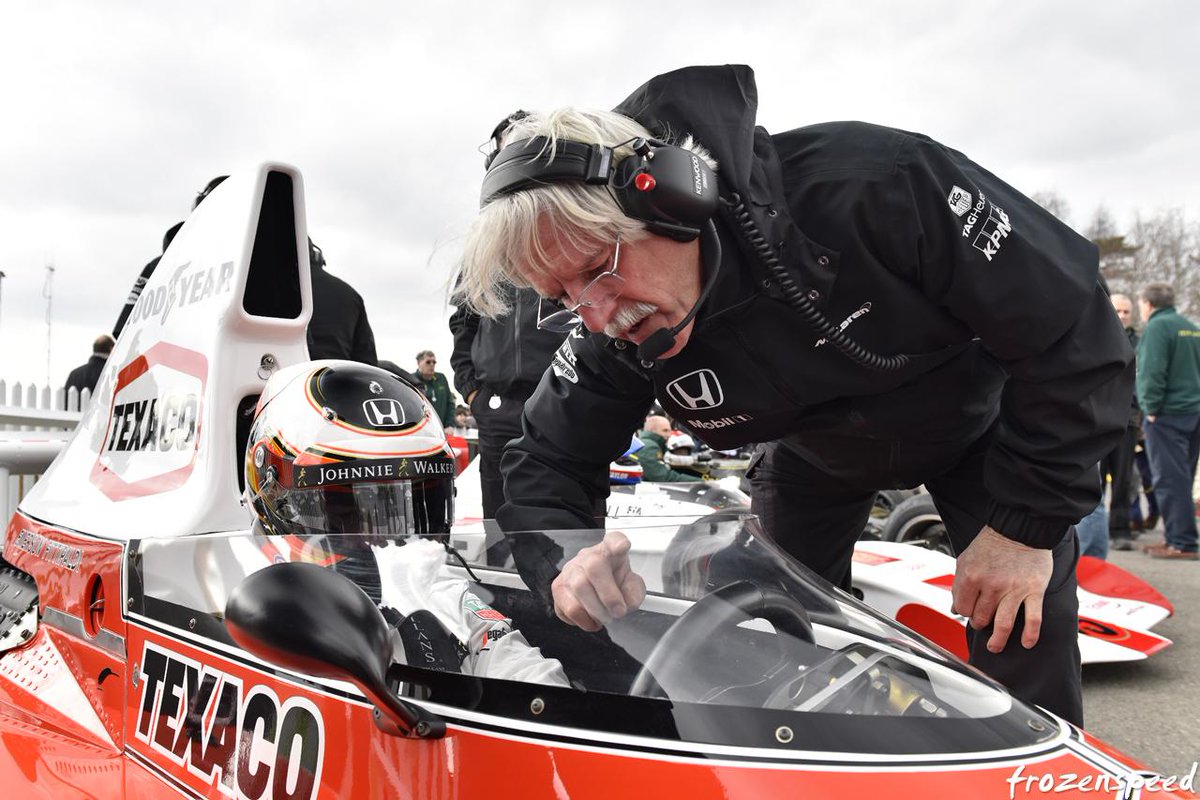
April 23, 2015. Stoffel Vandoorne receiving some final instructions from Neil Trundle at #73MM before heading out in the McLaren M23.
This week, however, I detected a note of controlled excitement, careful confidence as the gleaming grey and silver trucks rolled in from Monte Carlo. For one half of the team, at least, it had been a good weekend.
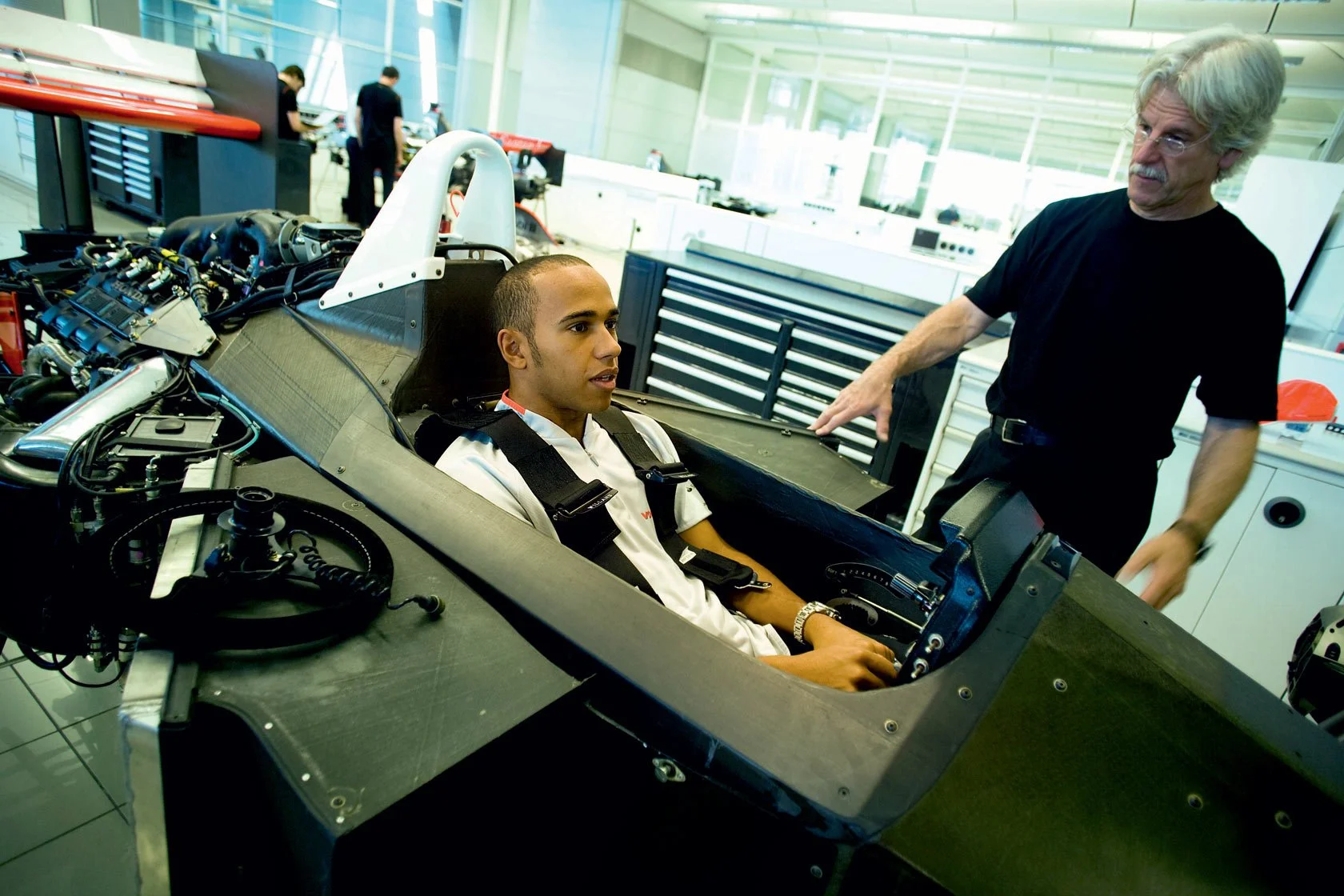
Lewis Hamilton in Senna's 1988 McLaren MP4-4.
A victory snatched from the briefly gaping jaws of defeat as Hamilton hit the barrier, happily near the pits and scampered back to win. Lucky yes and with a little help from mistakes by Ferrari (team and drivers) but sometimes you have to take your luck.
Smiling and chattering in the workshops at Woking then, a team on a high, energetically turning round the cars for Montreal.
I was there to see Neil Trundle and what a joy it was to spend a few hours in this man’s company. This year Neil celebrates forty years in motor racing, having started at Brands Hatch in 1968 with Alan Mann on the beautiful Ford FVL at the BOAC 500 meeting.
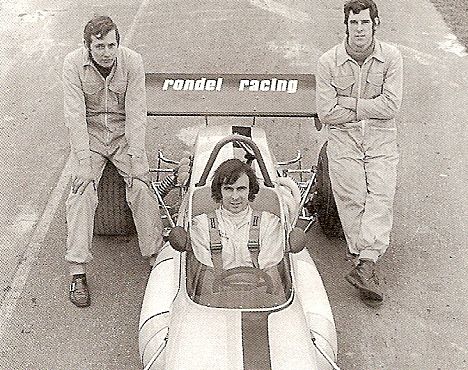
This is the man who founded Rondel Racing with Ron Dennis back in 1971, the two having met when they were mechanics at Brabham. (His early days at Rondel will be the subject of a Mechanics Tale later this year).
After running the Token F1 car and building the famous six-wheeler car for Ken Tyrrell he was re-united with Ron at Project 4 in 1977 and stayed on through the merger with McLaren to build MP4/1, the first carbon fibre Grand Prix car.
Then, in 1981, he left and started his own Formula 3 team, returning to McLaren in 1985 to fit out a new factory in Woking before becoming Chief Mechanic on the race team, looking after Senna and Prost.
What a career, what a life this man has had.
As we sit and chat in the ‘juice bar’ alongside the Fitness & Wellbeing Centre in the MTC we meander through the years, focusing on 1971 for the magazine and then delving into a veritable treasure trove of motor racing stories.
A favourite of mine is the tale of Jack Brabham at Zandvoort for the Dutch Grand Prix. Engine builder Repco had delivered new V8s but the pistons were far from perfect, they had burrs on them and were touching the valves. So Jack got himself a chisel and stayed up all night chiselling the pistons to perfection before changing into his race overalls and going out to practice. Neil, like so many of the great mechanics, learnt his craft with Jack – a man who had little time for chat and a lot of time for just getting on with the job.
Luckily, Trundle now has some time to chat and as we wander through the Grand Prix cars lined up along the ‘boulevard’ of the spectacular McLaren headquarters we pause beside the beauties raced by Senna and Prost, resting now on the highly polished tiles. He tells me there are now 650 people on the race team – that’s as big as Ferrari – and this is a good thing because we are going to see a titanic battle between the two teams as the year unfolds. He who develops fastest wins. Mistakes were made in Monaco, Raikkonen had one of his very ‘off’ weekends but the red cars will be back. There’s a long history of this – McLaren versus Ferrari – and this could be an absolutely vintage season.
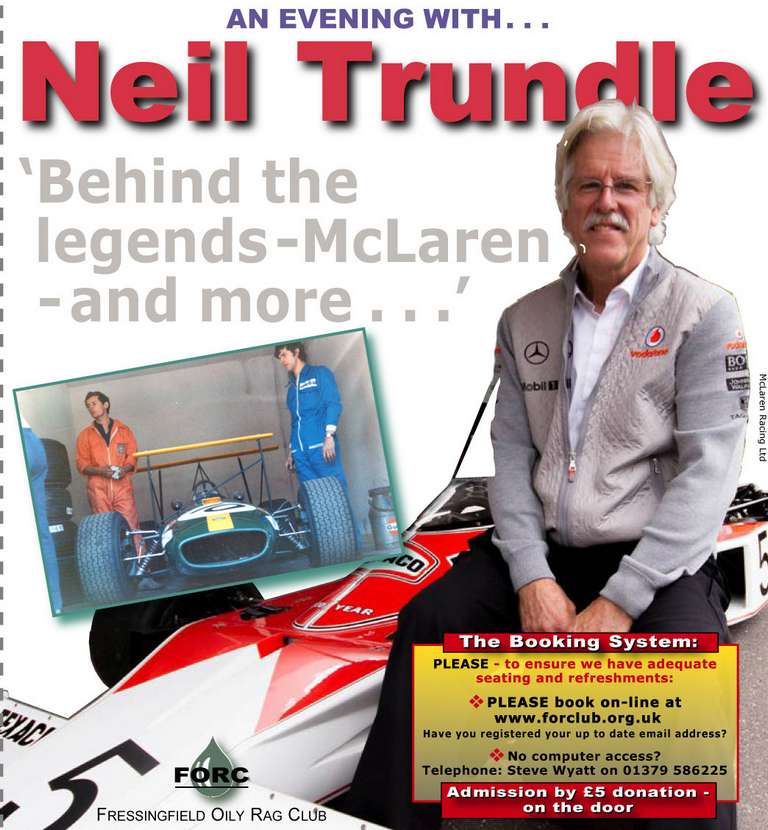
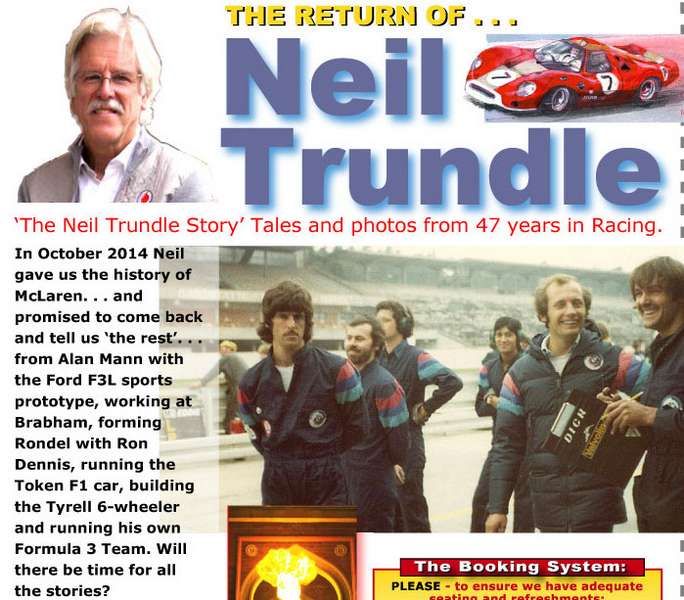
October 2014.
Thanks Mr Trundle for a most enjoyable afternoon. This man has tales to tell to last us until the world runs out of paper.
The Magic: Ayrton Senna. In 1988, Neil Trundle became Chief Mechanic on the McLaren race team and was looking after Ayrton Senna’s car until 1993. He remembers Senna very well... 27/09/2016.
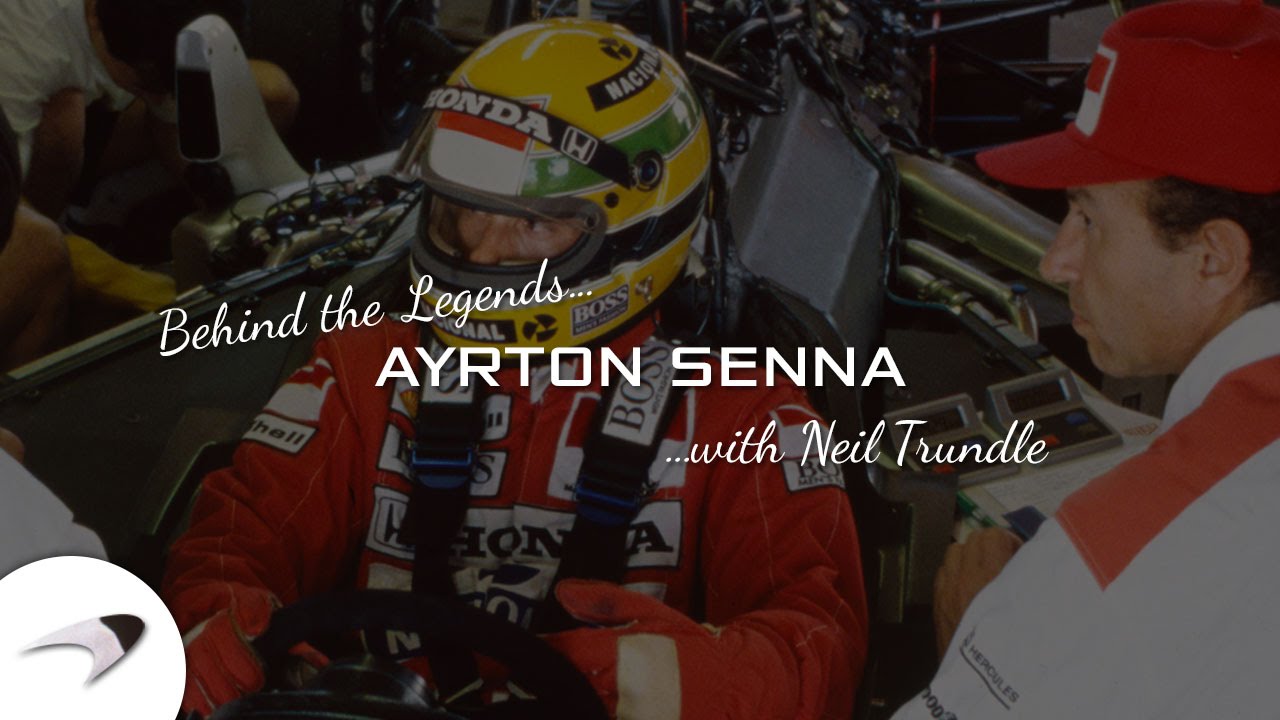
I don’t remember the day men landed on the moon, but I remember the day when I watched Ayrton Senna’s crash on television. I first met Ayrton in 1979, when I was working in Formula 3 and our Brazilian driver Chico Serra – who was one of the upcoming Brazilian stars – came into the workshop with a young man and his wife. He introduced us and said:
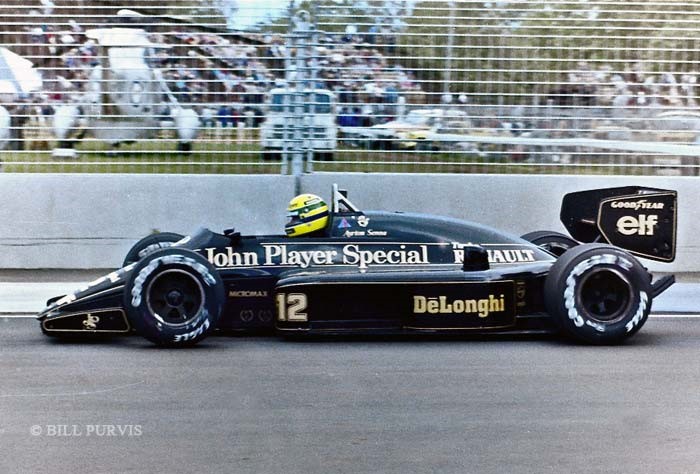
“this is Ayrton Senna da Silva, he is the Brazilian champion in go-karting and this man will be a world champion. His performance is outstanding.” In 1981, I started my own Formula 3 race team, and I often watched Ayrton drive in the Formula Ford, in the Formula Ford 2000 and in the Kart Championships. In 1988, Ron Dennis, who became a partner at McLaren some years before, asked me to become Chief Mechanic for McLaren. That’s when I started working with Ayrton Senna.
Unlike today’s drivers, he was much more involved in the technology of the car. Ayrton really knew what he wanted, he was really intelligent and had a good engineering brain. If you look at the early photos in Brazil, he was preparing his go-kart himself. He was a very focused driver and he always was in the best physical condition. In 1993, Ron Dennis tried to convince Ayrton to renew the contract with McLaren for another year, but Ayrton refused because he knew that we didn’t have a competitive car for him. So we had a race-per-race deal – he got one million dollars per race.
He never turned up for a race before the million dollars were credited to his bank account. But he was worth all the money. At the race in Donington for the European World Championship the track was wet and although we didn’t have a perfect car, he made an incredible race. He passed ten cars in one corner! No one was going to beat him.
Between the races, when we were either trying to improve the car or studying a problem, he was the warmest and loveliest guy you had ever met. When he came to the factory, he walked around and talked to anybody. The fame didn’t change him very much; he was still quite a humble person. In the media, he was often seen as an arrogant man, but that was not true. He was just pretty self-confident. When he was asked, which driver impressed him most, he didn’t say Alain Prost or Michael Schumacher; he said Terry Fullerton. They raced against each other in the World Kart Championship three or four times and Terry always beat him. Ayrton told me that this was the best competition and fun he had ever had. Unlike Ayrton, Terry never moved up to Formula Ford or anything else.
Many people here who worked with him still talk about him. He was really one of us. He wasn’t just an employed driver – he was one of the team.
OCT 21st 2020 Ethan Jupp. Meet Senna’s McLaren mechanic.
Nothing we can say about the driving of some of the all-time great F1 drivers hasn’t already been said before, but what about the man behind the car? In the case of the likes of Ayrton Senna and Alain Prost during the seminal 1988 Formula 1 season, that would be a Mr Neil Trundle. He was chief mechanic for Ayrton at the time and the caretaker for McLaren’s golden child, the MP4-4. What’s more, the now widespread concept of a carbon composite chassis traces back to a lead he chased.
Neil was at Goodwood SpeedWeek presented by Mastercard for what was his final event officially as a McLaren employee.

26-28th April 1974, Spanish Grand Prix, Jarama, Madrid, Spain. Emerson Fittipaldi, McLaren M23 Ford, keeps cool in the cockpit while being filmed as two Marlboro girls look on. Ref: 74ESP25. World Copyright: LAT Photographic.
He’s retiring, after 33 years at McLaren in various capacities and a life dedicated to racing. We thought we’d hunt him down for a chat and reflection on that golden era for McLaren and Formula 1.
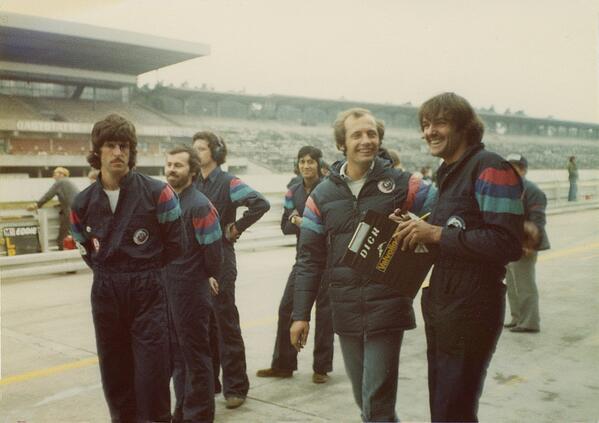
February 13, 2014. Three of McLaren’s greatest luminaries, Neil Trundle, Indy Lall and Ron Dennis at Hockenheim Procar.
We say employee but that does rather a disservice to the probable fact that he, along with his friend Ron Dennis (the very same), ushered in an iconic era in McLaren’s history and that without him, the name simply wouldn’t mean what it does today. But we’ll get to that.
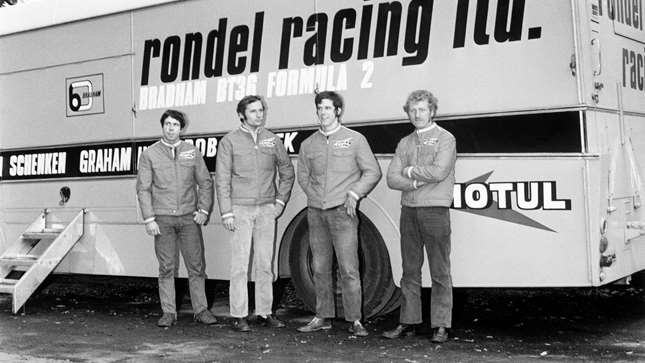
F2 1971, Rondel Racing. Clive Walton, Ron Dennis, Neil Trundle and Preston Anderson. Lat mi-Goodwood, 21.10.2020.
Beginnings with Brabham, Rondel and Tyrrell.
In 1968 Neil worked as a mechanic on the Brabham Formula 1 team, working alongside Ron Dennis with Jack Brabham and Jochen Rindt driving. With Brabham he travelled the world for F1 and IndyCar work, all the while forming a friendship with Ron. After Jack Brabham’s retirement, Neil left to pursue his own race career, building and driving a Formula Ford. Before too long he was back with Ron forming a new squad. Rondel racing was a taste of things to come when it came to Ron and Trundle – strong sponsor relationships and a string of successes, in 1971, ‘72 and ‘73. The 1973 oil crisis however brought everything to a screeching halt.
Trundle’s next project, the Token Formula 1 car, a carryover project from Rondel, was in his words, “one of the toughest times and the hardest I’ve ever worked in my life”.
“We worked night and day for eight weeks, hardly sleeping, to get the car ready. But we would have done it for nothing because that’s our passion.” Trials and tribulations that would build character and test the strength of that passion, ready for what was to come.
Trundle then moved on to Tyrrell, working in period with the six-wheeled Tyrrell P34 and being the first person to test it, in the absence of drivers Jody Scheckter and Patrick Depailler. “A wild idea and a lovely car,” he reminisces. “One of my favourite cars.”
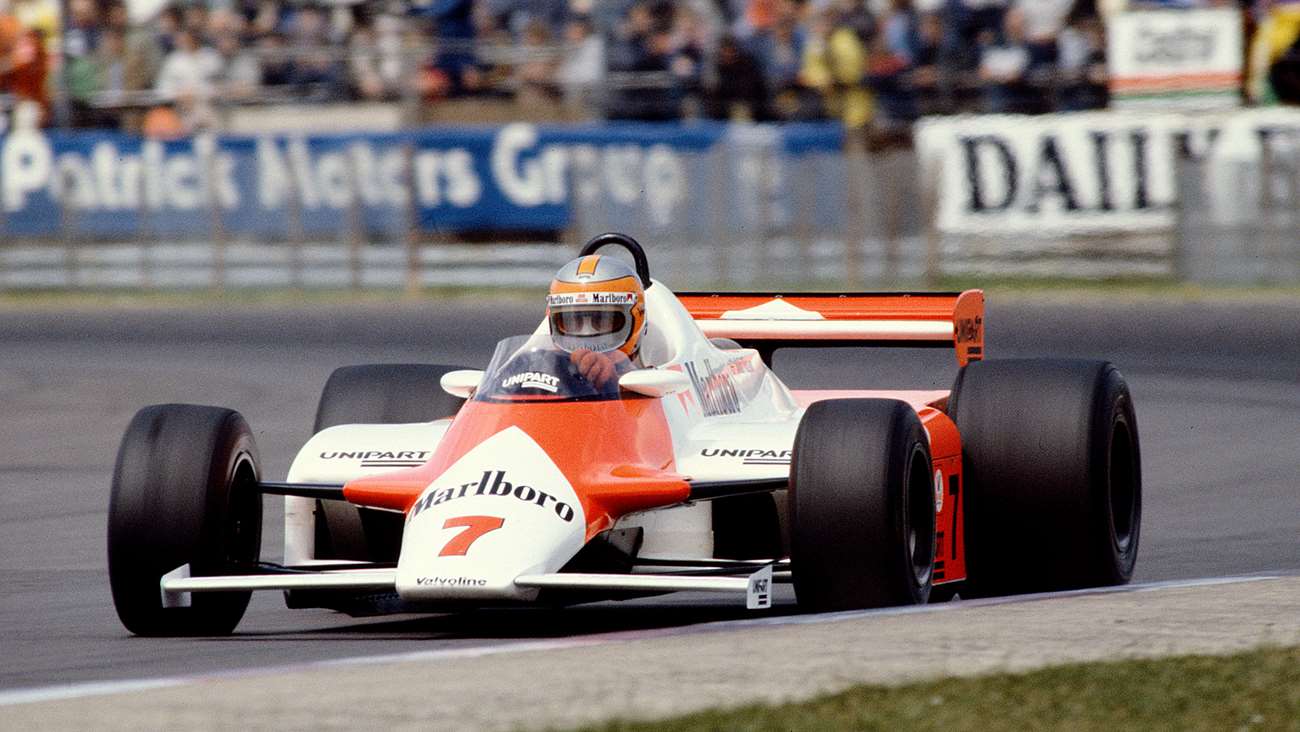
1981, Silverstone. McLaren MP 4-1, John Watson. Lat mi Goodwood 21.10.2020, Neil Trundle interview.
Project 4, carbon chassis and McLaren.
But it wasn’t long before Ron came knocking again, this time with Marlboro money and eyes on Formula 2, BMW Procars (with Niki Lauda), Formula 3 and eventually, Formula 1. Project 4 saw the dream team of Ron Dennis, legendary designer John Barnard, Neil Trundle and Kryton Brown assemble and bring forth arguably the greatest advancement in the last four decades of Formula 1.
Any car that has ever utilised a carbon construction, be it a racer or road car, can trace its lineage back to a phone call on a whim by Neil Trundle investigating aerospace materials. It’s that decision to proceed with the carbon chassis that ensured the amalgamation of Project 4 and McLaren would happen. Project 4 lived on in all subsequent cars, too, with the MP4 designation that ran until Ron Dennis’ departure from McLaren in 2017. Project 4’s revolutionary carbon car became McLaren MP4-1, as raced in the 1981, 1982 and 1983 seasons, succeeding the M30 and signifying a change in fortune for McLaren.
“It was such an exciting and revolutionary car,” Neil said, reflecting. “We put it together by hand and when we got it back from America, we knew we’d made history. When we did the twist test, it was 100 percent stiffer than anything. No one could get a narrow chassis stiff enough for ground effect but we had it. That MP4-1 brought McLaren right back up to the top.”

Allen Berg poses with members of the Trundle Racing team and two Ralt Toyota RT3/83 chassis. British F3 Championship, England, 1983.
Following the amalgamation, Trundle moved on from McLaren to set-up his own Formula 3 team, which saw big success in the first year. After four years, though, he was back at McLaren in time for the 1988 season. “I’m immensely proud of Ron for securing that TAG-Porsche deals on those engines while I was away,” he said. “I do regret the F3 venture, having not been there for that.”
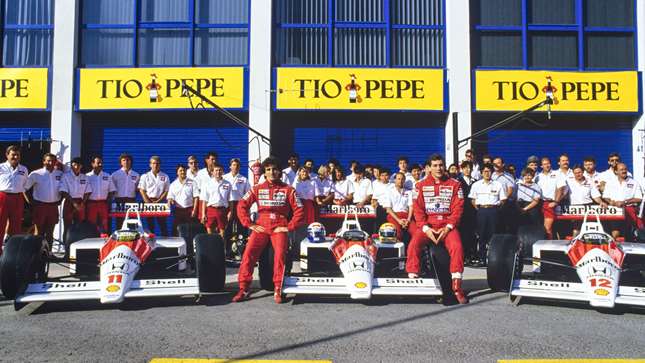
1988 Jerez. McLaren MP4-4, Alain Prost and Ayrton Senna. Mi Goodwood 21.10.2020, Neil Trundle interview.
MP4-4 – The Golden Child.
For 1988, McLaren had the MP4-4 – the last car to use the turbocharged engine, which would be outlawed for the following season. What a send-off ‘88 would turn out to be. Winning all but one race, at Monza, the MP4-4 was the perfect weapon with which legendary rivals Ayrton Senna and Alain Prost could do battle, with even odds, in the same superior car.
“Eighty eight was so easy” Trundle recalls gleefully. “The car, out of the box, was lightning quick. Everyone said they’ve limited the fuel, the boost – the NA cars will be a match. They weren’t. Our Honda and our car – that car – was magic.
“At the first test, Prost jumped in and went out for a run. He came in, we stripped the car, checked it over, put it back together and he went out again. When he got back – and he might not have even got out of the car before he said it – he said to Ron “that car could win us the championship”. The car was so quick, we’d have to put water down before it came in after a hot lap, to stop the tyres sticking. If they did, we’d risk breaking the suspension when jacking it up.
“Senna got in, of course he had to go quicker than Prost. He went two seconds quicker than anyone else and Ferrari said “well, they’ve turned up the boost”. They knew we hadn’t by the end of race one.
“It was sleek, light and had good straight-line speed. The engine was strong so we could run a wing like a barn door. You could never really suss why it was as quick as it was. It was that quick. There was something magic about the MP4-4. So that was an easy year. We didn’t have to do a lot. We did so well in ‘88 and ‘89, that’s why I left. I didn’t think I could better that.”
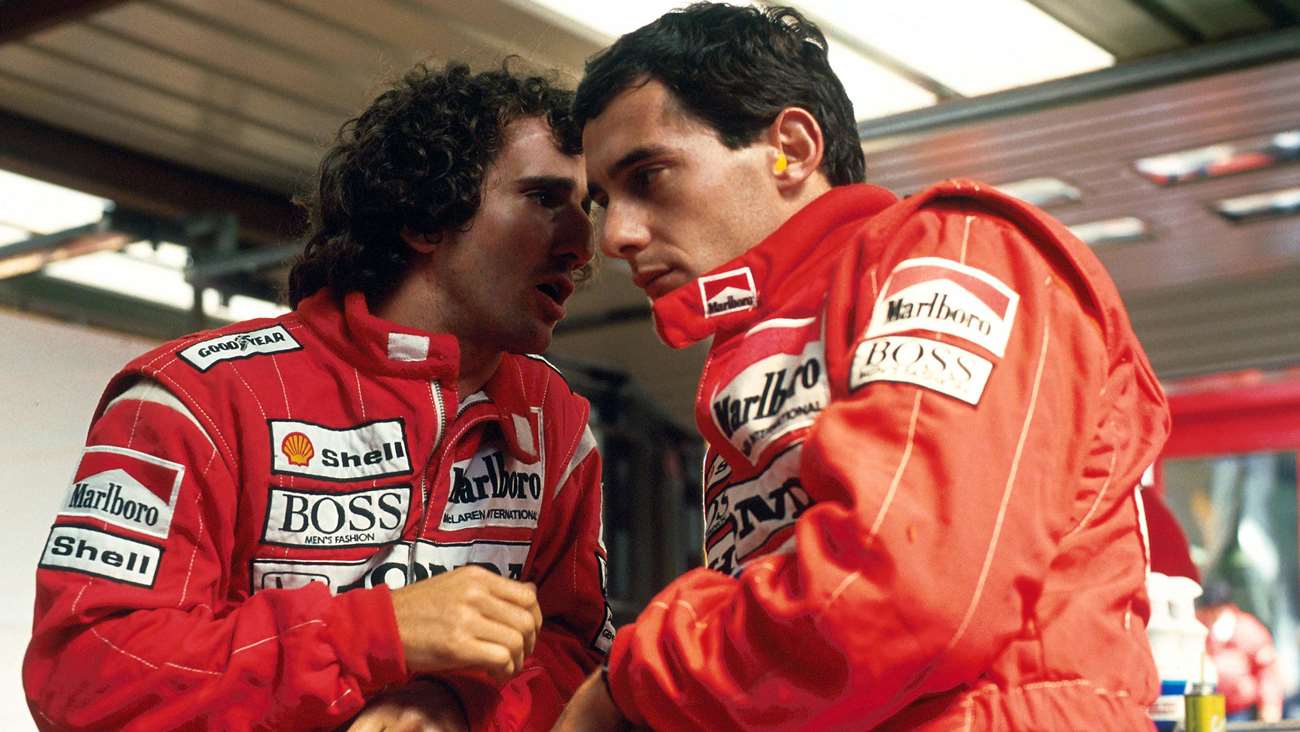
1988 Spa, Ayrton Senna and Alain Prost. Sutton mi Goodwood 21.10.2020, Neil Trundle interview.
Legendary personalities – Senna, Prost, Brabham, Rindt and more.
As race mechanic during that legendary season, Neil had face-to-face time with these F1 legends that few can match, at their best and at their worst. Alain and Ayrton were so effective at their craft but in near polar-opposite ways. You might expect their different styles would mean they’d have their cars run totally different. You’d be wrong.
“Alain always drove within himself, until he decided to push it. At Paul Riccard, for his home race, the French Grand Prix, Alain decided it was his race. He put it on pole and beat Ayrton fair and square. Most of the time, he kept a little bit in reserve and that’s why he never crashed. The guys called him The Professor because of how good he was at setting up a car.
“Prost used to say of Ayrton “he’s willing to risk it to get the pole”. Ayrton was very special and you saw that all the way through, from F3. Ayrton actually always followed Alain’s setup. He was very analytical, spending hours trying to get every last bit out of the car and then drove to it to the limit.
“Brabham was clever, very clever and could do anything on a car. He was also super calm and never agitated. I remember we had a heart monitor on him during a spin at Indy – his heart rate never went up. He was so cool – very special – and always nice to us guys. One of my heroes.
“Rindt was another Senna. On a single lap, there was no one quicker. He was confident to a fault and brave as hell. There’s not a driver I’ve worked with, from Brabham.
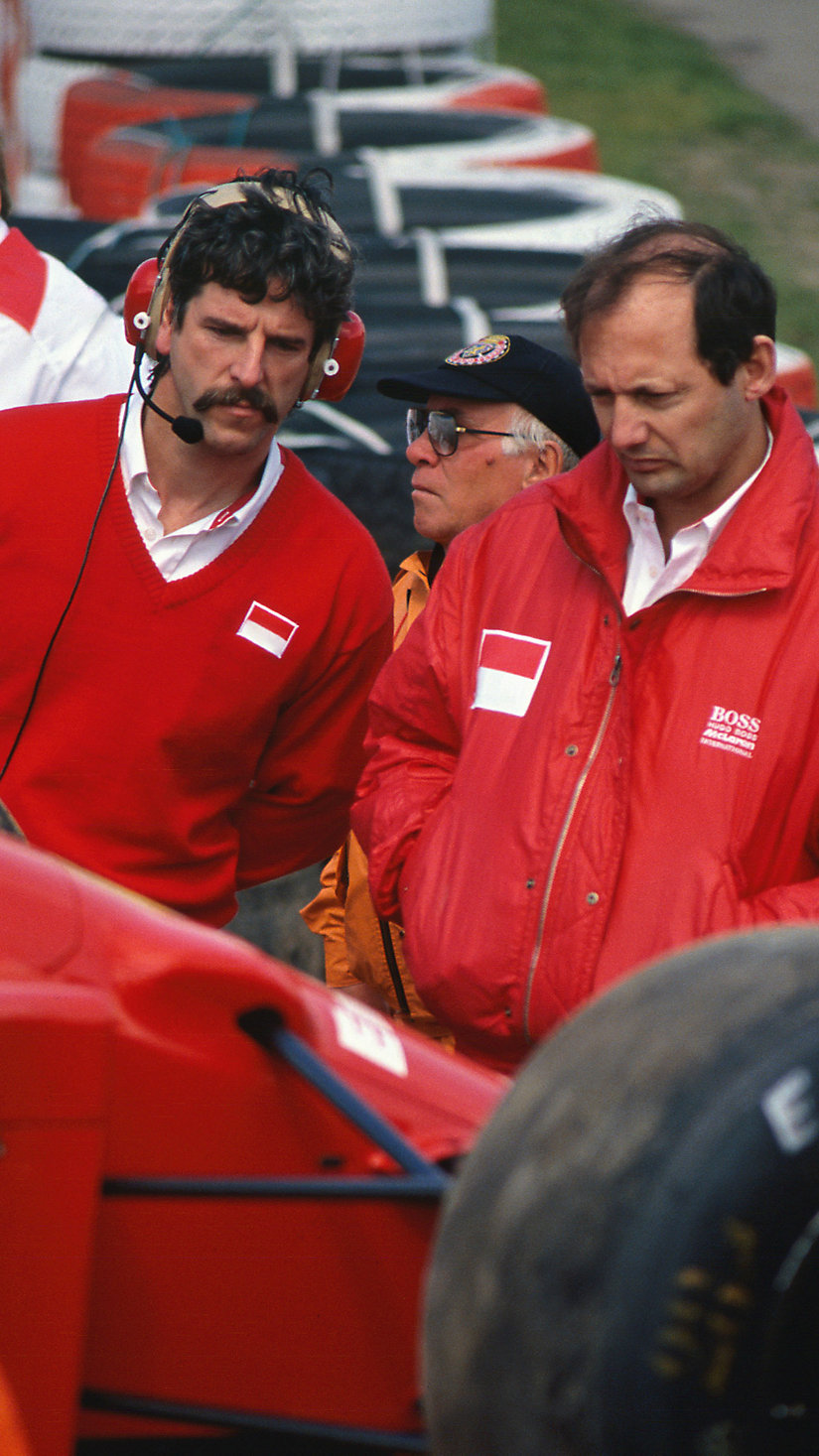
On Ron Dennis.
Ron Dennis is, it’s fair to say, infamous for his unique way of doing things. The precision, the dedication to detail and the discipline when his standards weren’t being met. It all earned him quite the reputation, so someone who worked with him on and off for near-on four decades naturally offers valuable insight. Trundle’s respect for his former colleague and friend is boundless.
“The man at Brabham was the same then as he is now. Absolutely fastidious, OCD and everything had to be absolutely perfect. He’s a driving force and can pull people in. A bit like our founder Bruce McLaren. There are quotes about Bruce from mechanics – “If Bruce came in and told us to down tools and follow him on a walk across a desert, we would”. Ron had that same affect.
“He’s a unique guy, a self-made man and was always going to get there. He’s tough, doesn’t take prisoners and says it like it is. He’s done well, he’s put his work in 24/7 and absolutely deserves everything he has.”
Transition to McLaren Heritage.
Following the 1988 and 1989 seasons, Trundle bowed out as the (boss) travelling mechanic, taking a position working with transmissions by the time the husky Honda V12 arrived. Before long he made his way into the Heritage department, looking after McLaren’s bygone legends, from the early Can-Am cars, to the F1 machinery, following the cars around to various events, including multiple visits to Goodwood, to keep them fighting fit. The MP4/4 was always his baby, though.
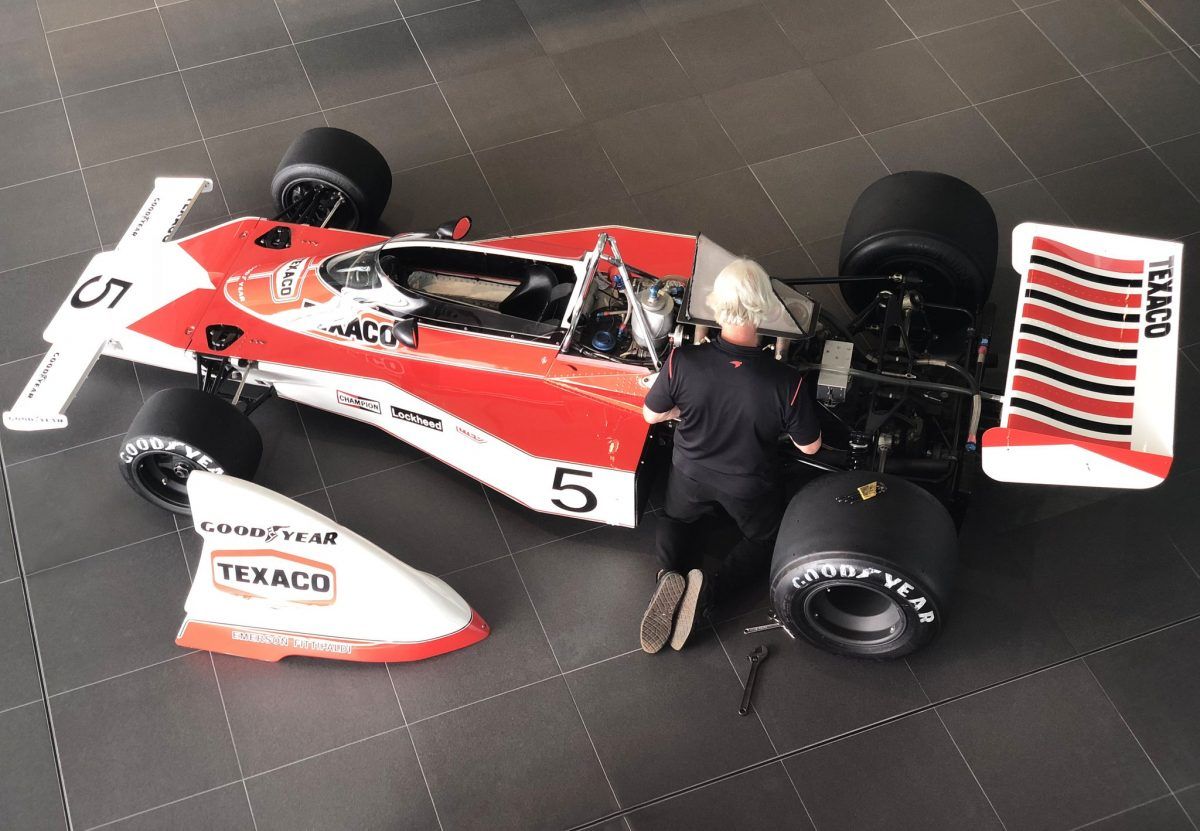
Far away from the frantic furor of a Grand Prix weekend - and from McLaren's frustrations - a stunning classic car from a bygone winning era is prepped for a revival. Neil Trundle, who looks after the heritage cars at McLaren, checks out Emerson Fittipaldi's 1974 championship-winning M23, likely in preparation for a run up the hill at Goodwood in a couple of weeks. A dream car and a dream job for the legendary Mr. Trundle…
“I liked the older stuff – the M8s, the M23, all the way up to the 4/4. The newer stuff with more computers isn’t quite my speed.
“Goodwood events are just magical and we all want to see them continue. We’re all passionate about the sport. That’s why we’re here.”
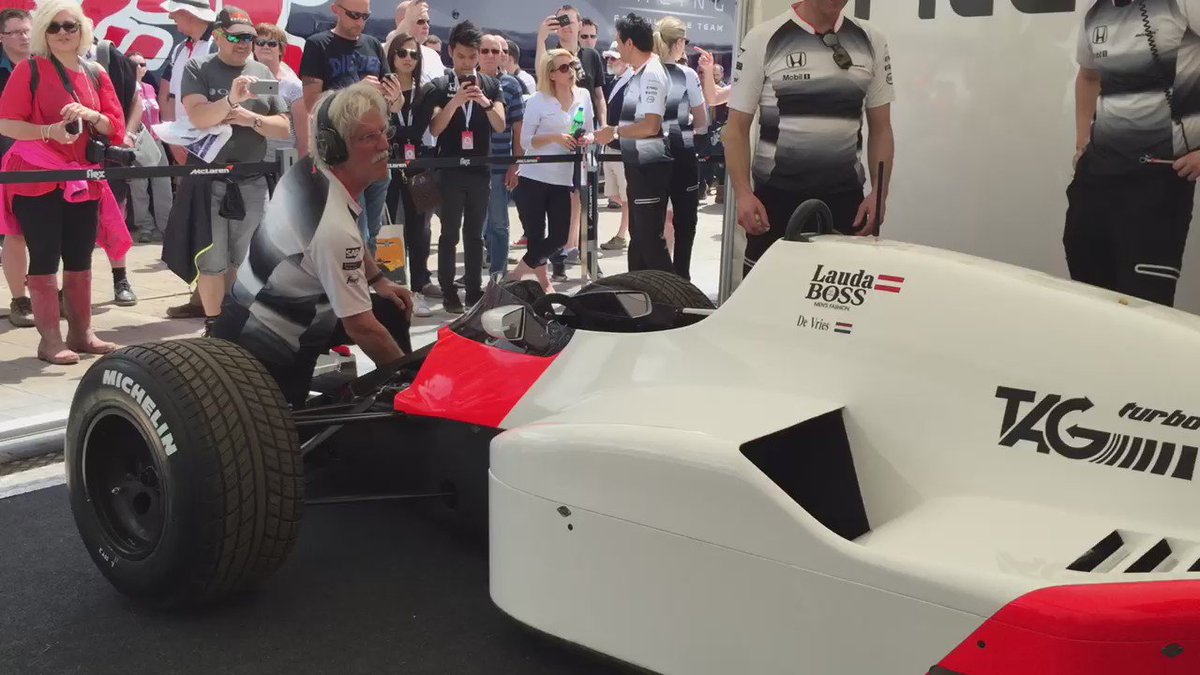
June 24, 2016. Legendary McLaren mechanic Neil Trundle fires up the MP42.
That brings us to present day. Over the years he’s taken a more distanced managerial position, having overseen the growth of a capable team to look after the cars. He leaves them after SpeedWeek in skilled, safe hands. SpeedWeek being the event to fit the times, wasn’t actually orchestrated as his retirement blowout.
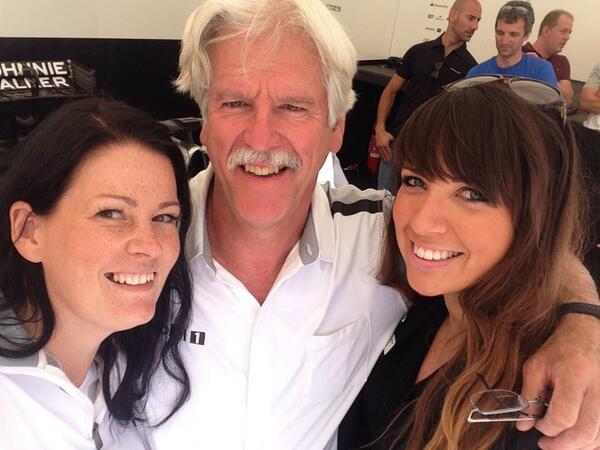
Natalie Stock, working in McLaren, with her colleague Neil Trundle. Jun 29, 2014.
“The 25th of October is my 76th birthday so I planned on retiring then,” he explains. “SpeedWeek just happened to come beforehand. I’m here, I don’t need to work on the cars. I’m what they call an ambassador. They’re starting what they call the Papaya retirement group, for McLaren people that put in 20 years before they retire. I’ll consult and I’ll visit regularly but officially, I retire on the 26th”. If anyone deserves entry into the ‘Papaya Group’ it’s Neil Trundle. Perhaps his partner in the salvation of McLaren, Ron Dennis, deserves one too.
Videos



Comments
Authorize to comment